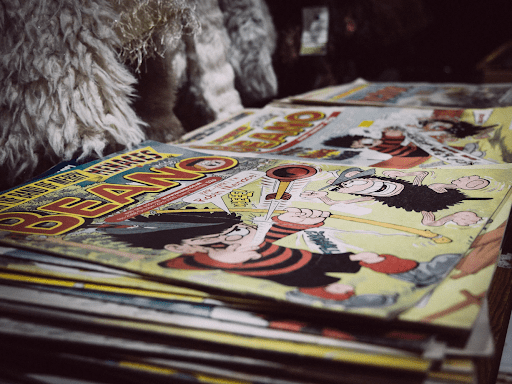Whether you are an avid reader of comic books or not, there are teaching opportunities to engage with your learners through comics and graphic novels. They can be useful resources to teach visual literacy and critical-thinking skills. In this blog post, I will share some tips and ideas that might encourage you to incorporate comics and graphic novels into your information literacy program.
Ideas for Using Comics and Graphic Novels in Information Literacy Education:
- Does your library have a huge collection of comics and graphic novels? Have you thought of creative ways to incorporate these sources into your library instruction? One approach is to show a few comics to the virtual classroom and have students search for a comic in the library catalog and research the comic’s background and stories. (This can also be done for in-person sessions if you have physical copies of the comic.) Students can conduct research on specific themes in these visual narratives pertaining to social justice, decolonization, intersectionality, human rights, resistance, racism, poverty, environmental justice, and so forth. Thinking of particular issues such as antiracism in comics? Check out the Anti-Racist Graphic Novel Reading List from Publishers Weekly.
- By exploring critical issues in society and connecting them to comics, it may provide an interdisciplinary frame for students to understand how comics can be important literary and visual source materials for researchers. If your library does not have an extensive collection, consider partnering with teaching faculty from academic departments such as English, Film Studies, History, Art History, or Popular Culture to build on this area.
- Thinking about teaching visual literacy using comics? Digitized comics collections including Comic Strip Library and Billy Ireland Cartoon Library and Museum can provide starting points for you to discuss the role of images in study of history, politics, and culture. You can encourage open conversations about these images and what the metaphors and representations are in them. Students can also conduct research on the context of the comic/art work for background information as well. The purpose of this activity is to engage with students to explore comics as visual resources when conducting scholarly research.
- Still need other teaching ideas that involve comics? Check out the CORA assignment on “Using Comics to Reflect on Academic Work” where students reflect on their experiences by conducting literature reviews through a first-person comic. By creating a visual narrative that utilizes literary references and metaphors, students can tell their own story through the literature review. The activity also comes with a series of questions and a checklist for you to adapt in your library instruction.
- Be sure to check out the ALA Graphic Novel and Comics Round Table (GNCRT) for additional resources, ideas, and tips in building graphic novel and comic collection, programming, and more! It’s a great community of educators, librarians, and library workers interested in graphic novels and comics!
See also:
Webinar: Taking Teaching Online: Tips and Resources from Makematic
Also from Raymond Pun:
- Beyond Discussion Boards: Applying Interactive Tools and Assignments for Learning
- Using Zines in Library Instruction and Outreach: An Interview with Academic Librarian Ann Matsushima Chiu
Blog:




